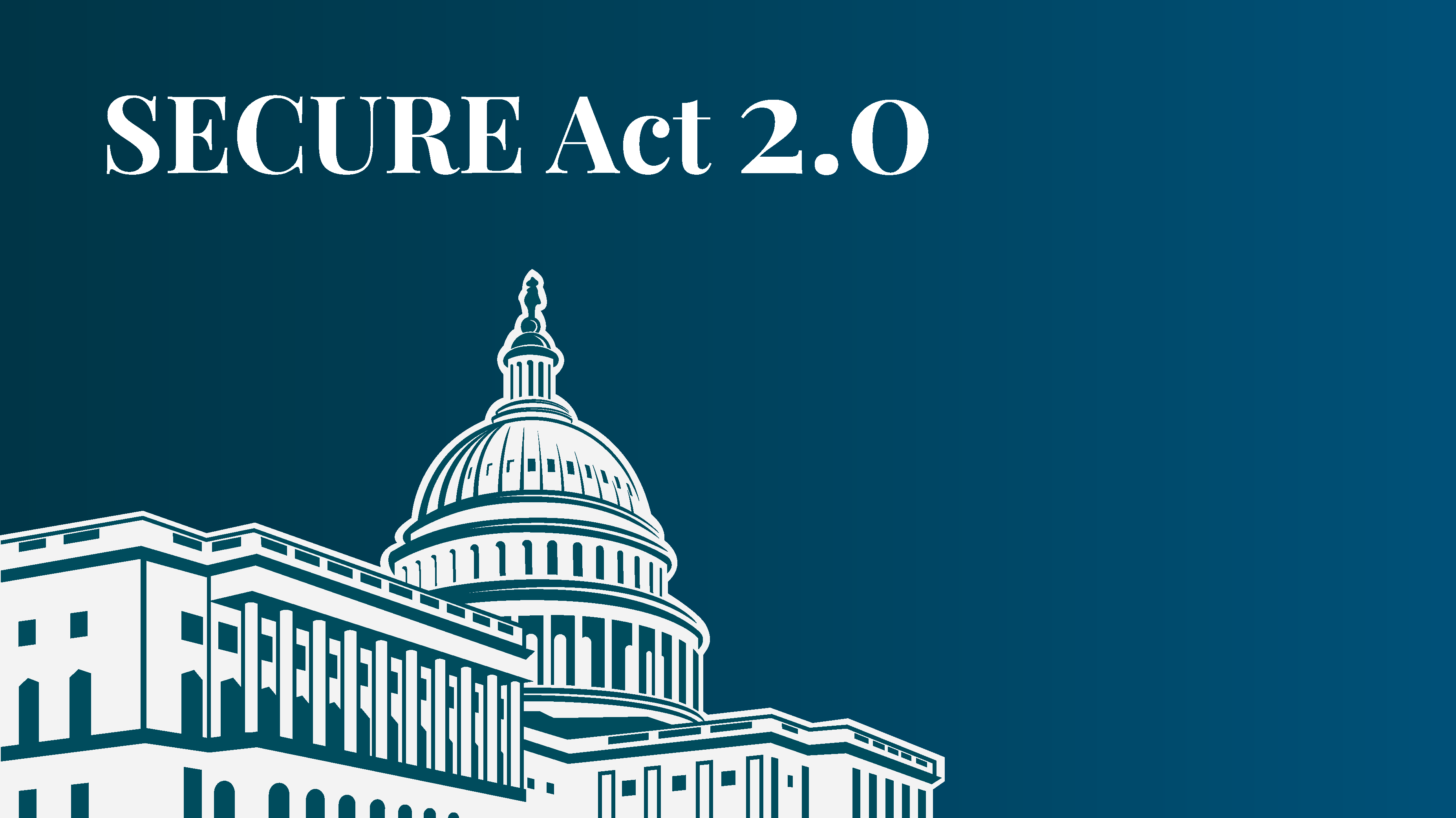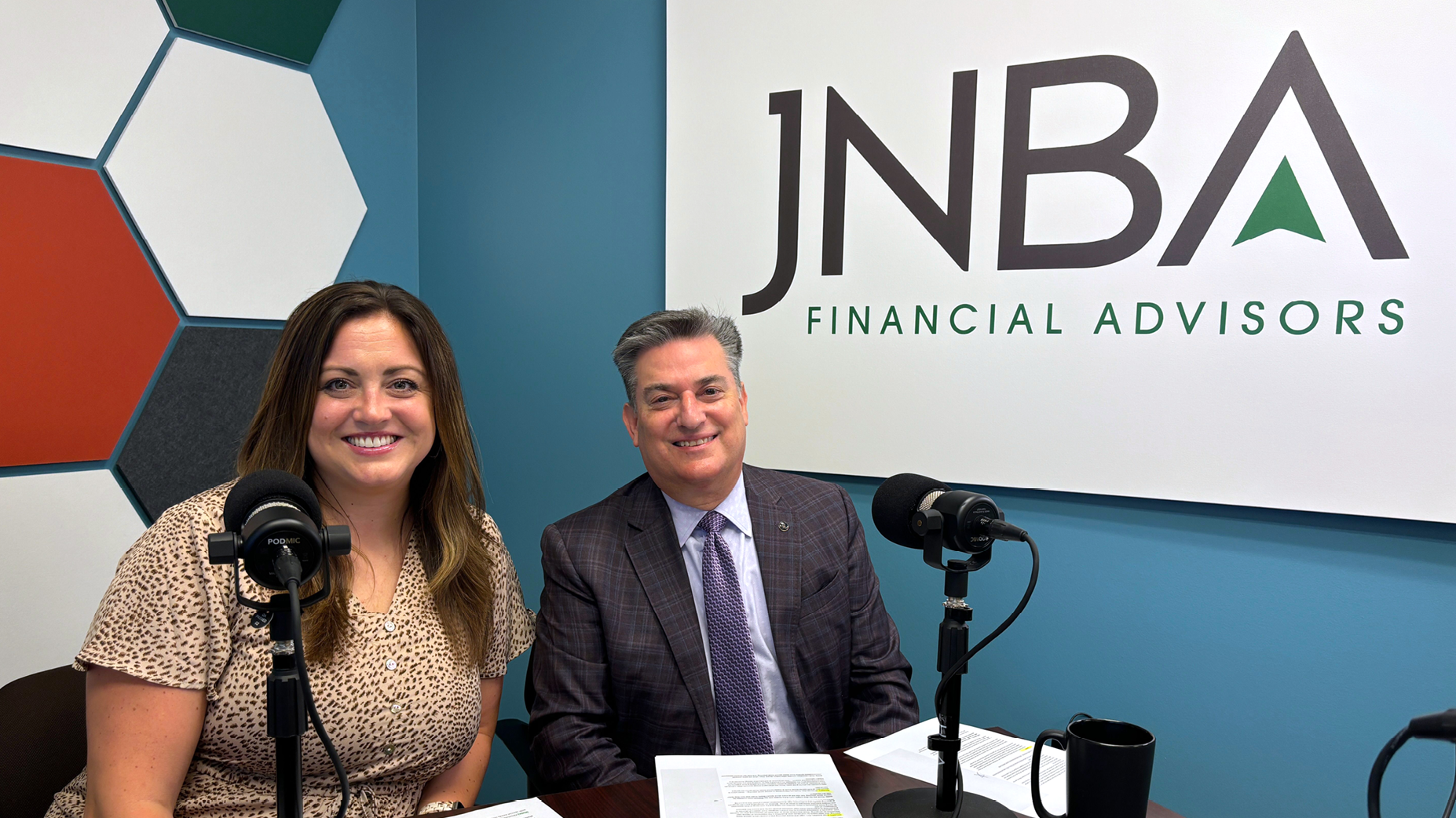Amid the 1,650-page, $1.7 trillion omnibus spending legislation passed by Congress and signed by President Biden in late 2022 were many changes that will impact individuals and companies in 2023 and beyond. Dubbed the SECURE 2.0 Act of 2022 after the similarly sweeping Setting Every Community Up for Retirement Enhancement Act (SECURE Act) passed in 2019, the legislation includes several provisions affecting work-sponsored retirement plans and, to a lesser degree, IRAs.
What Does the Legislation Do?
The following is a brief summary of some of the most notable initiatives. All provisions take effect in 2024 unless otherwise noted.
• Later age for required minimum distributions (RMDs). The 2019 SECURE Act raised the age at which retirement savers must begin taking distributions from their traditional IRAs and most work-based retirement savings plans to 72. SECURE 2.0 raises that age again to 73 beginning in 2023 and 75 in 2033.
• Reduction in the RMD excise tax. Current law requires those who fail to take their full RMD by the deadline to pay a tax of 50% of the amount not taken. The new law reduces that tax amount to 25% in 2023; the tax is further reduced to 10% if account holders take the full required amount and report the tax by the end of the second year after it was due and before the IRS demands payment.
• No RMDs from Roth 401(k) accounts. Bringing Roth 401(k)s and similar employer plans in line with Roth IRAs, the legislation eliminates the requirement for savers to take minimum distributions from their work-based plan Roth accounts.
• Higher catch-up contributions. The IRA catch-up contribution limit will be indexed annually for inflation, similar to work-sponsored catch-up contributions. Also, starting in 2025, people age 60 to 63 will be able to contribute a larger catch-up contribution of $10,000 or 150% of the regular catch-up contribution amount indexed for inflation (whichever is greater) for 401(k) and similar plans (and at least $5,000 extra for SIMPLE plans) each year to their work-based retirement plans. Moreover, beginning in 2024, all catch-up contributions to 401(k) and similar plans for those individuals with wages greater than $145,000 will be after-tax (Roth contributions).
• Roth matching contributions. The new law permits employer matches to be made to Roth accounts. Currently, employer matches must go into an employee’s pre-tax account. This provision takes effect immediately; however, it may take some time for employers to amend their plans to include this feature.
• Automatic enrollment and automatic saving increases. Beginning in 2025, the Act requires most new work-sponsored plans to enroll employees automatically with contribution levels between 3% and 10% of income, and it automatically increases their savings rates by 1% a year until they reach at least 10% (but not more than 15%) of income. Workers will be able to opt out of the programs.
• Matching contributions for qualified student loan repayments. Employers may help workers repaying qualified student loans simultaneously save for retirement by investing matching contributions in a retirement account in the employee’s name.
• 529 rollovers to Roth IRAs. Individuals will be able to directly roll over up to a total of $35,000 from 529 plan accounts to Roth IRAs for the same beneficiary, provided the 529 accounts have been held for at least 15 years. Annually, the rollover amounts would be subject to Roth IRA contribution limits.
• New exceptions to the 10% early-withdrawal penalty. Distributions from retirement savings accounts are generally subject to ordinary income tax. Moreover, distributions prior to age 59½ also may be subject to an early-withdrawal penalty of 10%, unless an exception applies. The law provides for several new exceptions to the early-withdrawal penalty, including an emergency personal expense, terminal illness, domestic abuse, paying long-term care insurance premiums, and recovering from a federally declared disaster. Amounts, rules, and effective dates differ for each circumstance.
These provisions represent just a sampling of the many changes that will be brought about by the SECURE 2.0 Act. There also are still gray areas around some of these provisions that are being further discussed and validated. We look forward to providing more details and in-depth analysis applying to both individuals and business owners in the weeks and months to come.
The above is intended as a high-level summary of some of the Act’s key provisions. Please note JNBA is neither an accountant nor an attorney and no portion of the above should be construed as accounting or legal advice. All legal and accounting issues should be addressed with a legal or accounting professional of your choosing.
Due to various factors, including changing market conditions and/or applicable laws, the content may no longer be reflective of current opinions or positions. Moreover, you should not assume that any discussion or information contained in this blog serves as the receipt of, or as a substitute for, personalized investment advice from JNBA Financial Advisors, LLC.
Please see important disclosure information at jnba.com/disclosure.



